Raised Concerns Regarding Botox and Other Non-Surgical Cosmetic Procedures: There Has Been a Noticeable Increase in Complaints
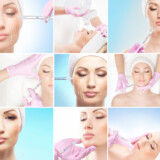
Campaigners argue that the number of people expressing displeasure with non-invasive cosmetic procedures like Botox has reached an all-time high and that this trend is expected to continue.
A total of 2,824 complaints were submitted to the national registry of practitioners and clinic associations during the preceding year.
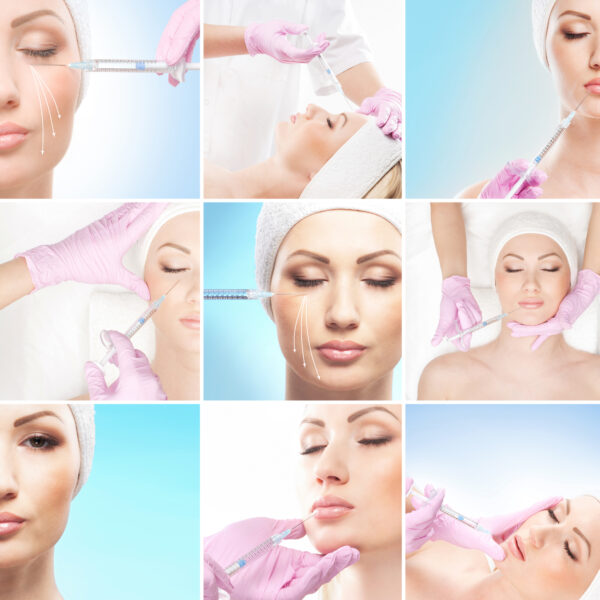
A tiny needle will be used to administer Botox to the specific facial muscles that are contributing to wrinkles.
Botox Procedures and Related Complications
When treatment issues are considered, the number is a quarter higher than it will be in 2020.
During the process of implementing a new framework for industrial licensing, there has been an increase in the number of complaints, which has led to concerns regarding inadequate public protection.
The members of parliament have expressed a desire for a quicker rollout of the policy.
At the present time, practitioners of aesthetic medicine in the UK are not required to have any kind of formal training. It gives the impression that any individual can perform filler treatments after completing the necessary training.
A health association that oversees the upkeep of a national register of doctors and clinics that administer Botox and have been subjected to stringent reviews received 2,824 complaints in the preceding year.
In spite of this, the Ministry of Health and Social Services turned down requests in February to speed up the process of implementing the regime. This has led to concerns that the implementation of the regulation could take as long as three years.
This is the case even though the number of complaints received by a health association in 2020 was significantly higher than in 2021 (2,436 vs. 2,083).
Hyaluronic acid injections as a method of rejuvenating the face
In this procedure, a chemical, most often hyaluronic acid, is injected into the face in order to reduce the appearance of wrinkles as well as improve the appearance of the lips and cheekbones.
The recent rise in popularity of women who attempt to look like celebrities like Kylie Jenner and Kim Kardashian, which has occurred in recent times, has caused some commentators to express their concern that these women are in danger of becoming victims of the cosmetic and aesthetics industry, which is largely unregulated.
When the executive chairman of the cosmetic practitioners’ joint councils looked at the amount of work that needed to be done, he agreed that the July deadline was completely unrealistic.
He predicted that no matter how hard everyone worked, it would always take them two incredibly hectic years to finish it, putting the projected release year at 2025.
With the proper education and training, you can make a real difference in your patients’ lives by assisting them in achieving their cosmetic objectives without receiving any complaints. For online classes, please go to https://dentox.com/all-courses/botox-training/, or for live patient courses, please visit https://dentox.com/live-courses/.
Watch out for Botox? In the UK, complaints about non-invasive beauty treatments are at an all-time high

Since 2020, the number of complaints about cosmetic procedures like Botox has increased by 26%. In addition, 2,824 complaints were filed against unlicensed specialists in the previous year.

Botox provides volume and maintains moisture, while Botox temporarily paralyzes muscles to eliminate wrinkles.
Approximately 900,000 Britons get Botox injections annually, where a compound called botulinum toxin is injected into areas of the face like the forehead and around the eyes and mouth to reduce the appearance of fine lines and wrinkles. Wrinkles are reduced as a result of this procedure because muscle contractions under the skin are prevented by blocking the nerve signals that trigger them.
Unfortunately, there has been a dramatic increase in the number of complaints about non-invasive cosmetic procedures like Botox.
2,824 complaints were submitted last year to a national registry of doctors and clinics.
The amount, which accounts for treatment complications, is 25% more than in 2020.
Until a new licensing regime is implemented for the industry, there is cause for concern about the lack of public protection, as evidenced by the recent uptick in complaints.
MPs are pushing for a quicker rollout of the policy.
There are currently no requisite credentials for working in the aesthetics field in the United Kingdom. That means any interested party can take a training course and practice dermal filler treatments on their clients.
But the Department of Health and Social Care turned down requests to hasten the regime in February, raising concerns that it could take up to three years to implement the regulation.
Despite a significant rise in complaints to a UK government-approved register for medical aesthetic treatments, from 2,436 in 2021 to only 2,083 in 2020, this remains the case.
As of the year 2022, 69% of all complaints involved derma-fillers, which can set you back somewhere around £200.
In this method, a substance (typically hyaluronic acid) is injected into the face to smooth out wrinkles and enhance facial features like the lips and cheeks.
Its popularity has skyrocketed in recent years as more and more women try to emulate the likes of Kylie Jenner and Kim Kardashian, raising alarm bells among experts who fear that British citizens will become victims of a cosmetic and aesthetic industry that is largely unregulated.
One woman who sought out anti-wrinkle injections has been linked to serious complications after allegedly receiving an unapproved product.
Half of her face was surgically removed because she was plagued by infections that were eating away at her tissue and nerves.

Aesthetic clinics must be under the licensing scheme before treatments to protect patients.
It could be life-threatening if it isn’t properly regulated if people aren’t given the right training, and if qualified individuals aren’t properly accredited and licensed.
With so much work to be done, the MP’s demands that the regime is in place by July were deemed unreasonable.
Two extremely busy years were always going to be required to get it ready, so 2025 was always going to be the year of its introduction.
However, safeguards could be implemented, and the government was urged to launch an appropriate awareness campaign for anyone considering receiving these treatments.
Professionals may be required to carry malpractice insurance as another safeguard against having to shell out hundreds of pounds to fix a problem that is not their fault.
In addition to the annual complaints, there are dozens of cases heard each year of people who have not had the legally mandated in-person consultation prior to receiving botulinum toxin injections.
A representative from the UK Department of Health and Social Care has stated that, after a number of fruitful meetings with interested parties, the department plans to hold its first consultation this summer regarding the procedures that will fall under the licensing scheme.
It was discovered that aesthetics clinics in the UK were running unlicensed cosmetics lotteries in which patients could win Botox injections.
It was discovered that a dozen different clinics were holding online raffles, with tickets starting at just £5 and offering the chance to win treatment packages worth up to £650.
Critics charged that those organizing the raffles were using “dangerous tactics” to encourage Britons to undergo such treatments, some of which required a prescription.
They expressed concern that making the procedures available as prizes could normalize them despite the risks.
And new studies have found that Botox may make it harder to understand the emotions of those around you.
In a study where participants viewed images of happy and sad faces, those who had received the anti-aging injections showed abnormal brain activity in regions associated with emotion.
Dentox helps medical professionals learn how to inject Botox correctly and effectively. You can register for a seminar at one of the many venues we have spread out across the country, or you can take one of our courses live online or on demand. Please visit https://dentox.com/live-courses/ and https://all-courses.dentox.com/botox-training/ for additional information about our live and online courses, respectively.
Patients with nerve injury may experience long-term pain relief thanks to modified Botox


A nerve injury can interfere with the capability of the brain to connect with muscles and organs.
Researchers have created a variant of Botox that may provide patients with chronic nerve injury with long-term pain relief.
Botox is the brand name of a muscle relaxant that is administered topically in very low doses to the face in the form of injections in order to reduce the appearance of creases and lines.
It is a protein created from the Botulinum toxin, which is produced by the bacterium Clostridium botulinum.
Botulinum toxin is safe when used at low concentrations, but large doses can cause temporary muscle paralysis.
Botox has been modified by scientists in the United Kingdom and the United States to alleviate pain without paralysis or other unintended consequences.
Although not yet tested on humans, the modified Botox appears to have a similar effect duration to that of cosmetic Botox (up to five months).
Because the currently available pain medications are limited by dangerous side effects, modified Botox may be able to help those who struggle to manage their chronic pain.
Chronic pain sufferers require additional methods for controlling their discomfort.
In other words, they require medications that are both safer and more effective.
In animal models of human pain, these newly discovered botulinum molecules effectively reduce pain-like behavior.
There are millions of people whose lives are negatively impacted by chronic pain, but this method has the potential to pave the way for the development of pain treatments that could significantly enhance their quality of life.
Since long-term use of opioid pain relievers like morphine and fentanyl carries the risk of addiction, abuse, and fatal overdose, these drugs can only be used for temporary pain relief.

Modified Botox can alleviate long-term relief from pain caused by nerve injuries.
Using Clostridium botulinum components, this method represents a novel attempt to recreate Botox.
By taking the original Botox and reassembling it with longer components, we get the “elongated” version.
This variant of Botox did not induce paralysis or other harmful effects in animal testing with rats.
There is currently no one-and-done treatment for persistent pain, and the vast majority of analgesics have undesirable side effects.
Now, we need to see if a single injection of this new nonparalytic blocker at the site of pain can produce long-lasting pain relief in humans.
It is hoped that the modified drug will help millions of people around the world who live with chronic pain.
Training for Botox is currently being made available to those working in the medical field. Online courses can be found at https://dentox.com/all-courses/, while in-person courses featuring real patients can be found at https://dentox.com/live-courses/. Gaining new abilities that have a positive effect on patients’ looks, health, and vision will improve their quality of life.
How to Recognize and Prevent Spock Eyebrows
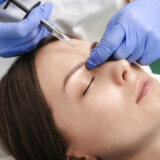
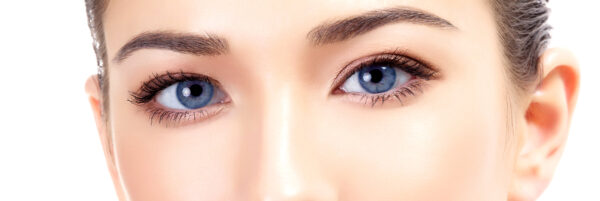
Many people would like their eyebrows to be perfectly shaped.
Spock eyebrows are nothing to make light of, despite their humorous moniker. Spock eyebrows, also known as Spock brows or Joker’s eyebrows, get their name from the famously arched-eyed Star Trek character. They develop when Botox® is injected in the incorrect location of the lower forehead and brow area.
We aren’t picking on Botox in particular. Spock eyebrows may result from using any neuromodulating drug made with botulinum toxin type A, such as Botox®, Dysport®, and Xeomin®.
Even though the effects of Botox are supposed to be temporary, the Spock eyebrows some people experience can last for months.
Spock Eyebrows: What Are They?
Treatment with Botox for frown lines, crow’s feet, or brow lifting often results in the unintended side effect of a “Spock brow.”
The condition, marked by an exaggerated outward arch of the eyebrows, typically manifests itself within a week of starting treatment. The effect typically lasts for four to six months, or until the medication is no longer effective.
Uneven Botox injections can cause a “Spock eyebrow,” which appears when the muscles in the forehead are no longer properly balanced. It occurs when the frontalis muscle, which makes up the majority of the forehead, is not injected with Botox along with two other muscles in the area (the procerus muscle, which runs up the center of the forehead from the nose, and the corrugator muscle, which runs along the top of each brow). The frontalis muscle pulls the brow upward and outward while the procerus and corrugator muscles are paralyzed, giving the face its characteristically arched appearance.
Avoiding Botox-Induced Spock Brows
Spock eyebrow can’t be avoided by simply dosing the frontalis muscle properly. Over-injecting the frontalis muscle can lead to additional issues, and each patient’s forehead anatomy is unique.
Some skilled injectors recommend splitting up a Botox treatment for the forehead into two appointments, with the first session consisting of a lower dose of injections followed by a touch-up session 10 to 14 days later. The risk of a fatal overdose from a first injection is decreased, and the results can be fine-tuned and tailored to the individual. (The only solution here is to be patient and wait for it to resolve itself over the course of several months.)

It is possible to fix Spock’s eyebrows with more Botox treatments.
Can Spock Eyebrows Be Fixed?
Prevention is always preferable to treatment when it comes to cosmetic issues, and patients who don’t want Spock’s eyebrows are no exception. The best way to lessen your chances of experiencing any complications from Botox, including the development of Spock’s eyebrows, is to work with a seasoned injector who has done countless treatments on the forehead and brows.
However, even the most skilled injectors of Botox occasionally make mistakes. What can you do if you start to develop a Spock brow after getting Botox?
With additional Botox injections, Spock eyebrows can be corrected. The key is to be patient, though.
Although the effects of Spock’s brow are visible within a few days, the full effects of botulinum toxin type A may not be seen for up to two weeks. Make sure to schedule your follow-up appointment at least two weeks after your initial treatment if you want to maintain the brow arch you’ve achieved.
If your original injector is unwilling to provide free touch-up injections or you no longer feel comfortable working with them, you should find someone else who has a solid track record of satisfied patients. They may provide the service at no cost or at a steep discount in the hopes that you will use them as your primary source of aesthetic medicine.
The Dentox training program may teach you how to use Botox to fix your Spock’s eyebrows. Dr. Howard Katz is, without a doubt, the most skilled and accomplished expert trainer in the area of cosmetic and therapeutic injectables. Join us, and we’ll show you how to become an outstanding injector who can deliver results that blow the doors off the expectations of your patients.
Attend a seminar in person at one of many locations across the United States, or sign up for a live online or on-demand course. Live courses can be found at https://dentox.com/live-courses/ and online courses can be found at https://all-courses.dentox.com/botox-training/.
Botox Injections are One Method for Treating Hyperhidrosis

Hyperhidrosis refers to the medical condition in which an individual experiences excessive sweating that is not triggered by changes in temperature or physical activity.

Primary hyperhidrosis is unexplained excessive sweating. Botox is licensed by the FDA solely for excessive underarm sweating, however, it is used for numerous types of hyperhidrosis.
The overactivity of the sweat glands is the primary symptom of the medical condition known as hyperhidrosis. The consequence of this is profuse sweating that is unrelated to either physical activity, temperature, or any of the other typical triggers.
The palms, armpits, soles, chest, head, and face are some of the areas of the body that are impacted by this condition.
In most cases, hyperhidrosis does not represent a significant risk to one’s health. However, this situation frequently results in awkwardness and embarrassment.
Primary hyperhidrosis refers to an abnormally high level of sweating in the absence of a known trigger. Secondary hyperhidrosis refers to instances in which the condition can be traced back to an established root cause, such as Parkinson’s disease, menopause, hypoglycemia, or an overactive thyroid.
This condition is thought to be caused by a malfunction in the sympathetic nervous system, which regulates the body’s temperature and is responsible for the fight-or-flight response. There is a possibility that genetics play a part in this as well.
It appears that people with primary hyperhidrosis, even when environmental conditions do not call for the evaporative cooling effects of sweat, receive brain signals that cause their sweat glands to activate. This causes the individual to have excessive sweating.
The antiperspirant that was suggested to you by your internist is a typical first-line treatment option for managing the disorder. Medications known as anticholinergics are also used. These medications block the electrical signals that are sent throughout the body to stimulate the sweat glands. Beta-blockers, which serve to disguise the ways in which anxiety manifests itself physically, are sometimes prescribed. In some instances, patients choose to undergo an endoscopic procedure known as thoracic sympathectomy, in which the nerves that are responsible for sweating are cut.
Botox, an injectable protein made from the botulinum neurotoxin, has been shown to be effective in inhibiting nerve impulses, including those that are linked to sweating. Whenever topical treatments fail to control primary hyperhidrosis, injectable Botox is often used because it blocks nerve signals that instruct sweat glands to become active. The results are visible after three to four days on average and can last for as long as six months.

Those who have Botox injections are able to reduce their sweating.
Those suffering from hyperhidrosis can reduce their sweating by more than 85% after receiving Botox injections, according to the International Hyperhidrosis Society.
At the site of the injection, patients may experience discomfort, swelling, and bruising as potential adverse effects. Botox has been approved by the Food and Drug Administration (FDA) for the treatment of excessive underarm sweating only, despite the fact that it is commonly used to treat a wide variety of hyperhidrosis. It is an “off-label” use for other bodily parts.
In light of the fact that the antiperspirant is not providing you with any relief, your internist will be able to help you decide whether oral medications, Botox, or surgery are the most appropriate next steps for you to take.
If you enroll in Dentox’s training program, you might find out how to administer Botox to treat hyperhidrosis. Dr. Howard Katz is the most well-versed and seasoned expert trainer in the field of cosmetic and therapeutic injectables. Come to us for the education that will make you an expert injector, capable of producing results that far surpass industry standards and leave your patients speechless.
You can enroll in a live online or on-demand course or attend a seminar in person at a variety of locations throughout the United States. For additional information regarding both live and online courses, please go to the following websites: https://dentox.com/live-courses/ and https://all-courses.dentox.com/botox-training/.
The Step-by-Step Guide to Becoming a Supplier of Medical Equipment


A medical equipment supplier is a fantastic career choice.
You’re really into the idea of enhancing other people’s self-esteem by improving their appearance. However, you may not be a “people person” or feel that you lack the time necessary to pursue a career in medicine or nursing. Have your hopes for medical care been dashed?
Of course not! Providers and practices that deal directly with patients are supported by a network of thousands of medical vendors, including supply companies, service providers, and staffing agencies.
When it comes to the industry of medical supplies, there are a comparatively low number of obstacles that new businesses must overcome. Perhaps that’s the best route to take if you’re intent on beginning a career in healthcare.
There is no getting around the fact that attaining your goals will require a fair amount of work from you. If you’re interested in starting your own medical supply company, you can use these guidelines as a starting point.
Develop a Strategic Plan for Your New Medical Supply Enterprise
The first step in starting a business is settling on a direction and figuring out how likely it is to succeed. Consider:
- What kind of goods or services you’ll offer? Don’t waste time and money on creating something completely new if you need to get up and running quickly. After all, getting a medical device approved by the FDA can take a long time. Disposable supplies, long-lasting medical equipment, and higher-margin aesthetic products are less of a hassle to distribute.
- Your intended market. Determine who your target customers are. independently run medical facilities? emergency care facilities? health spas? providers of in-home medical care? Hospitals? All of the aforementioned?
- Your earnings and room for expansion. Start developing your business plan and marketing strategy by conducting market research (or having someone else do it for you) to determine a realistic annual revenue and growth projection.
- Funds for investment. Even if your business is profitable, it may take some time before it begins to generate revenue. Determine the source of that money and whether you will have enough.
Acquire All Necessary Licenses and Permits for Your Medical Supply Business
The next step, after you’ve laid the groundwork for your idea and decided it’s viable, is to incorporate your business. Therefore, you must:
- obtaining the right amount of coverage for your business needs.
- You need to register your company with the state and/or local governments.
- Set up a limited liability company (LLC) or another legal entity that works for your business.
- get familiar with the laws and regulations governing the sale of medical supplies, and make sure you’re in compliance with them.
- get familiar with and fulfill the state’s minimum standard operating procedures for businesses, such as registering for unemployment insurance.

Grow your healthcare distribution business
Expand Your Medical Supply Company
It is now time to expand your medical supply company with the necessary foundation in place. For marketing and business growth, you’ll need to allocate a sizable amount of resources. Utilize tactics like:
- Coordinate your vendors. Find and negotiate deals with businesses that can provide you with the products you sell or the raw materials you need to get started. Get a business attorney to look over any contracts you sign.
- Develop a website that serves as a marketplace. Get yourself an online storefront if you can legitimately do business in that manner. In the process of expanding your business, this could help you connect with more potential buyers while minimizing the space you need to do so physically.
- Connect with healthcare providers and organizations. Besides spending money on digital and trade journal advertising, you should also try to get your product in front of doctors and people in charge of purchasing at hospitals and healthcare systems.
Your medical business will hopefully grow beyond its current size in the not-too-distant future.
Aesthetic injectables are going mainstream, so what’s next?


For the past several years, the market for cosmetic injectables has increased by double-digit percentage points annually. Global expansion, especially in developing nations, has been hastened by rising consumer purchasing power and increased availability of services (primarily through aesthetic clinic chains, med spas, and beauty bars). Changes in how people feel about health, beauty, and healthy aging have led to the rise of new patient groups, like men and millennials, who are more open to and accepting of aesthetic treatments.
Future growth expected to be double digits
Whether the market grows at the predicted rate of 10 to 12 percent or reaches its upside potential will depend on how well the industry takes advantage of growth trends and adapts to the needs of new patient groups.
Most of the undecideds in this cohort are males, who are predicted to more than double their use of injectables over the next five years. Based on the in-depth interviews we conducted, we found that approximately one-third of hesitators are likely to become believers, particularly in areas where an abundance of aesthetic clinics and chain stores lowers prices and increases accessibility.
Injectables might have less of a social stigma, and doing nothing could be seen as self-neglect. This could be a sign that people on the fence have changed their minds or a reflection of global social trends.
Five developments resulting in a larger patient pool
Five emerging aesthetic trends that address patients’ evolving wants and needs were uncovered by our survey and analysis.
1. New patient segments are benefiting from the increased visibility and acceptance that has resulted from the widespread use of social media
The amount of time people spent talking about neuromodulators on social media increased by a factor of five between 2010 and 2020, while the amount of time they spent talking about dermal fillers and biostimulants increased by a factor of eight. Different types of patients respond well to digital communications; for instance, 60% of Twitter mentions are from people under the age of 25, and 60% are from men. Aesthetics providers and manufacturers are adjusting to the fact that more of their customers and potential customers are online by connecting with them directly or through influencers who are making aesthetic procedures more common.
2. Businesses providing beauty services are mushrooming
The availability of cosmetic surgery is growing rapidly in all parts of the world. Channels are caught between two opposing forces: consolidation and expansion. Aesthetics clinic chains are coming together to strengthen their market position and speed up their growth. On the other hand, a slew of new medical professionals is entering the field in order to meet the growing demand for aesthetic-related services, such as auxiliary services in dental surgeries and nurse-administered therapies in large aesthetic-focused practices.
Patients in the United States now have more ways to get injectables, such as through large aesthetic clinic chains and the rise of wellness and beauty bars that offer cosmetic microtreatments (these are non-invasive methods, such as laser treatments and high-quality skincare products, that gradually restore a more youthful appearance). During our exploration of the Los Angeles metropolitan area, we uncovered 60 points of sale in Santa Monica alone.
3. Emerging evidence is gaining traction
Neuromodulators are often used for problems in the upper face, but they are also being used more and more for problems in other parts of the face and body. Biostimulation is often used to lift the buttocks, while dermal fillers are most often used to treat the lips, chin, and cheeks. Having sharper facial features is a preference in China, but this is just one example of how tastes can vary from country to country. It has been found that some borderline signs are more common in pioneering places like Los Angeles, such as jawline revision.
4. Providers are responding to patients’ demands
One of the most important ways for the industry to grow is by finding new ways to use dermal fillers and biostimulants. If clinical tests go well, China could have more than ten by 2025. This is especially true in the United States and China. There are also new technologies appearing, such as biostimulators and silk-based innovations. The healthcare providers who took part in our survey think that these tools will be used more in the coming years. When compared to neuromodulators and devices, the number of patents filed for new dermal fillers and biostimulators is four times higher.
Doctors want to do more than just perform individual procedures; they want to fill unmet needs like eliminating cellulite, sagging skin, acne scars, and excess fat. A broader range of treatments will need to be combined in order to achieve this. The business world is spending money on cutting-edge technologies like cell therapies and energy-based devices (EBDs) like blue-light therapy lamps for the home. Adjacencies and a rush to learn about and implement cutting-edge technologies, gadgets, and regenerative medicines may emerge as a result of a survey of innovation and aesthetics-based investment hotspots.
5. The influence of patient preferences on channel behavior is growing
We found that more and more people are doing their research before undergoing their first cosmetic procedure. North Americans trust online search results more than doctor referrals when seeking medical information. In developing countries, traditional media still carries more weight than the internet. These tendencies are borne out by younger patients; while 26% of patients over the age of 50 have no preference for a particular brand, only 5% of patients under the age of 40 feel the same way. According to surveys, over 40% of consumers ultimately choose a product because it was recommended by their doctor.
While this is happening, channels are adapting to meet the needs of the various patient subgroups. Most people under the age of 60 prefer to see a dermatologist or dentist, while beauty bars serve as a gateway for the younger demographic, and, in the United States, affluent people flock to MedSpas.
The Demand for Botox treatments for Males Continues to Rise
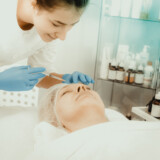
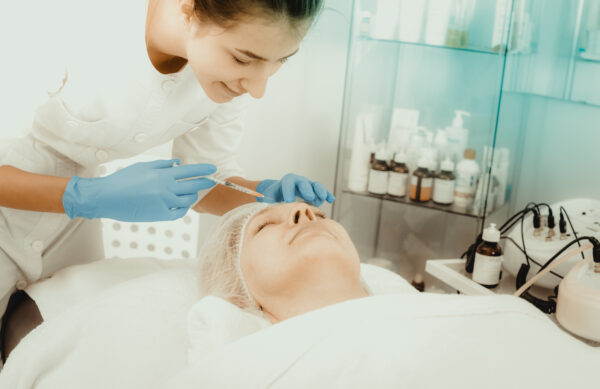
More than 25 years have passed since the introduction of Botox as a therapy for wrinkles, and in that time, an increasing number of men have begun to seek out the procedure for themselves. The number of guys getting Botox treatments keeps climbing higher and higher.
One of the most significant factors is divorce. Our research has shown that treatments like Botox may boost a man’s self-esteem, mood, and confidence, which is especially important now since there are more guys in the dating pool than ever before.
Work strain is another factor contributing to the rise of “bro-tox” or “bloke-tox,” as the phenomenon has been variously termed. In the business of finance, a man’s appearance is vital not just for landing a job but also for retaining that employment. Men don’t want to seem furious or tight with wrinkled brows; they want to be viewed as being in control of their game and at the top of their game. They look better, feel better, and perform better at work thanks to Botox and fillers that have been carefully administered.
There is also a role for the wives. They frequently bring in their spouses, but almost without fail they tell the aesthetician, “Don’t get rid of all of his wrinkles; just make him appear less fatigued.”
In spite of the fact that it is becoming more and more popular, there are still issues regarding the reason why the procedure might seem so much more obvious on a male than it does on a woman. The reason for this is that doctors frequently treat guys in the same manner that they treat women, which might cause men to look more feminine. Even though there are clear differences between men’s and women’s faces, they are often ignored. The primary problem is that women’s eyebrows have a natural arch, whereas men’s eyebrows are flat across the top. A man’s appearance will become more feminine if he gets Botox between his eyebrows.
Take David Beckham and Colin Farrell, for example; If they had brows that were high, arched, and thin, they wouldn’t have the same tough appearance. Men should never seem flawless; they should have a few wrinkles and furrows here and there. Botox is most effective on men’s faces when it is used to smooth out the deep wrinkles that develop between the brows over time. These creases give men an angry or sorrowful appearance. As a consequence of this, medical professionals were required to have a solid understanding of anatomy and to conduct their training sessions using both male and female patients as models.
Another important consideration is the presence or absence of hair. When a guy is going through the process of male pattern baldness, lines can emerge higher on the face than they would on a woman. The treatment area has to be adjusted by the doctor depending on whether the hairline is receding or still relatively low.
In addition, men have to be aware of fillers, which are designed to fill any deep holes in the skin and enhance the volume that has been lost. Although men often want injections to make their cheekbones appear higher, doctors should not comply with these requests since doing so would make them appear more feminine. It is preferable to solely concentrate on the restoration of volume for the front portion of the cheeks while attempting to plump up the cheeks. Men in particular are more likely to have lip thinning as they age, although further vigilance is still necessary. When applied to men’s lips, filler tends to seem far more visible than when applied to women’s lips. It calls for the utmost attention to detail and specialized knowledge. A small amount of Botox placed on the sides of the lips, however, can alleviate the downcast expression.
Maintaining confidentiality is of the utmost importance, as the vast majority of men prefer to conceal the fact that they have had cosmetic surgery, particularly from their colleagues at work. To avoid treatment giveaways, men should aim for an 80% correction rate. The most skilled practitioners can now steer clear of obvious imperfections. When administering an injection, medical professionals are required to use syringe needles that are as thin as possible. This is done to reduce the risk of bruising.
Six Things to be Aware of before a Medical Spa Treatment


It is hardly surprising that the popularity of medi-spas has skyrocketed in recent years. Today’s medi-spas are promoted as a hybrid between a medical clinic and a spa; in addition to the usual spa offerings (manicures, pedicures, massages), they also include therapies that claim to reduce the appearance of fine lines, age spots, and body hair. With the added convenience of having procedures like Botox and laser hair removal performed there, too, you would think these centers provide the best of both worlds.
The fact is that the majority of medi-spa employees lack substantial clinical training. Although the current Groupon may entice you to try a spa near you for a cosmetic surgery, before you book an appointment, you should think about these six things the spa’s management may rather you didn’t know:
There could not be a doctor available
A physician must serve in the role of medical director, although he or she can “supervise” from their own medical practice hundreds of miles away. Medi-spas, in contrast to doctor’s offices, typically employ little to no medical staff to provide or monitor treatments or keep track of patient information. In case of emergencies, a medical professional may not be immediately available.
It’s important to remember that the supervising doctor could not have the necessary level of expertise or training. Some doctors, in an effort to supplement their income in the face of declining medical insurance reimbursements, are taking on additional duties as directors of medi-spas. Even though the director of your spa has a medical degree, they may not have the expertise to deal with any complications that may develop from spa treatments if they don’t focus on that area of medicine. As the best bet, Seek cosmetic procedures performed by doctors who have completed further training in cosmetic, plastic, or facial plastic surgery and who are board certified to do such procedures.
Think about how extensively educated a “medical aesthetician” is
Spas frequently claim to employ medical aestheticians, or skin care professionals, to carry out their operations. Only 400 hours of schooling are needed to become an aesthetician, and that number might include on-the-job training. Aestheticians learn about facials, massage, and waxing after completing cosmetology school where they learn about hair, nails, and cosmetics. After taking further classes in laser and injectable techniques, these professionals can call themselves “advanced aestheticians.” Think about the fact that personnel at medi-spas may be administering potentially harmful treatments while having little to no medical training.
How perilous is it? Botox and other dermal fillers like Juvederm Voluma, Restylane, and Radiesse can cause major problems if administered improperly. A greater chance of injecting into a blood vessel, which can result in blindness, exists when filler is injected in the area surrounding or between the eyes. When injected too close to the eyebrow, Botox can induce temporary drooping that lasts up to four months. This latter problem can only be solved with the passage of time.
In addition, there are potential dangers associated with laser treatments. They are potent tools that can leave lifelong scars on your skin and eyes if used improperly. In addition, while it takes a medical license to buy a laser, the technicians who use them may have less education and experience. Lasers’ intense bursts of light have the potential to inflict severe harm if misused.
Equipment costs a lot of money
Devices that perform functions like liposuction, skin tightening, fat removal through heat or cold, hair removal, skin resurfacing, and laser spot removal have come a long way in the realm of nonsurgical techniques. A spa can’t afford to invest in a portable gadget that costs more than $100,000 without paying customers. Try not to be the first person to “try out” any new services. Instead of relying just on manufacturer brochures, ask to view before and after photos of actual spa guests who have received the procedure.
The workers at medi-spas aren’t educated to look for signs of cancer
If you have an annoying zit or an unattractive mole, it might be for more than just looks. Skin cancers can be removed by a board-certified dermatologist, plastic surgeon, or facial plastic surgeon, who will then send the tissue to a specialized lab for analysis. A dermatologist or aesthetician who isn’t well-versed in skin lesions could overlook this.
Unlike conventional swimming pools, spas do not need to adhere to the same safety standards
Medical spas are not subject to the same regulations as hospitals or other medical facilities. Spas that do not operate out of a doctor’s office have to adhere to a different set of safety regulations than hospitals.
If the technician isn’t qualified or the spa isn’t clean, getting a manicure or facial might put your health in jeopardy. Be sure the spa you intend to visit has the necessary licensing before you commit to any services.
You can buy fake Botox
Consider your Botox treatments a bargain, right? An extremely low price might indicate that you are being scammed. Fake dermal fillers, Botox, and other injectables have been on the market. Neither a reputable spa nor a medical clinic would ever consider using a product that has been altered.
Of fact, not all medi-spas pose risks, especially for the kinds of spa services most people associate with such establishments. Make sure an expert doctor is in charge of administering any “medical procedures,” such as fillers, Botox, laser treatments, or deeper peels. A doctor’s advice, some web research, and some inquiries into the staff’s credentials should all precede your next day of primping.
After receiving Botox, a woman discovers that her chin looks “messed up,” and she’s not alone. “I resembled Buzz Lightyear”

Botox can be used to reduce the visibility of chin wrinkles.
A simple Botox procedure resulted in a woman having a botched chin, and she is not the only one to experience this problem. It caused her to panic.
A woman from the US uploaded a video to TikTok showcasing the Botox results that left her chin looking lumpy and strangely swollen.
Despite the fact that the Botox began to take effect a few days later, and her chin eventually relaxed and returned to its normal appearance, many viewers cautioned that they had a similar experience when they had cosmetic procedures done.
She, who works as a hairstylist, revealed to her audience the effects of Botox on her chin.
She appeared normal when her face was at rest, but her chin became uneven and lumpy when she tensed her muscles.
More than 9.3 million people have watched the video, which stunned hundreds of people who commented on it.
A viewer wrote that they were “canceling their appointment right now!”
A different viewer claimed that even though she didn’t need a justification, she ended up getting Botox anyhow.
A third person remarked, “What’s happening?” “Time to end.”
This has happened to a large number of women who have undergone the same procedure, but most of them report that the side effects from the botched job only last a few days at most.
Truly terrifying. About a week later, it had disappeared. and had changed their appearance significantly.
This condition has that effect for a couple of days before it begins to have its full effect. When it happened for the first time, a woman’s worst fears were realized.
Everything was in such a chaotic state.
A viewer commented that they looked like Buzz Lightyear after getting Botox, while another viewer said that she had a tootsie roll chin and laughed for two months straight.
Others remarked on what might have triggered her chin to respond to the procedure of botox injection. completely normal in appearance after the first two weeks while it takes effect. If it stays like this after two weeks, You merely require more, really!
Muscle is still contracting, indicating that either it wasn’t enough to completely relax it or that it hasn’t yet fully taken effect. No problem at all.
After a week and a half, the woman told her followers on social media that her chin had returned to normal.
Everything has started working, and she is pleased with the results.
By assisting your patients in achieving their aesthetic goals, you can have a real positive impact on their lives with the right education and training. For online classes, please go to https://dentox.com/all-courses/botox-training/, or for live patient courses, please visit https://dentox.com/live-courses/.





